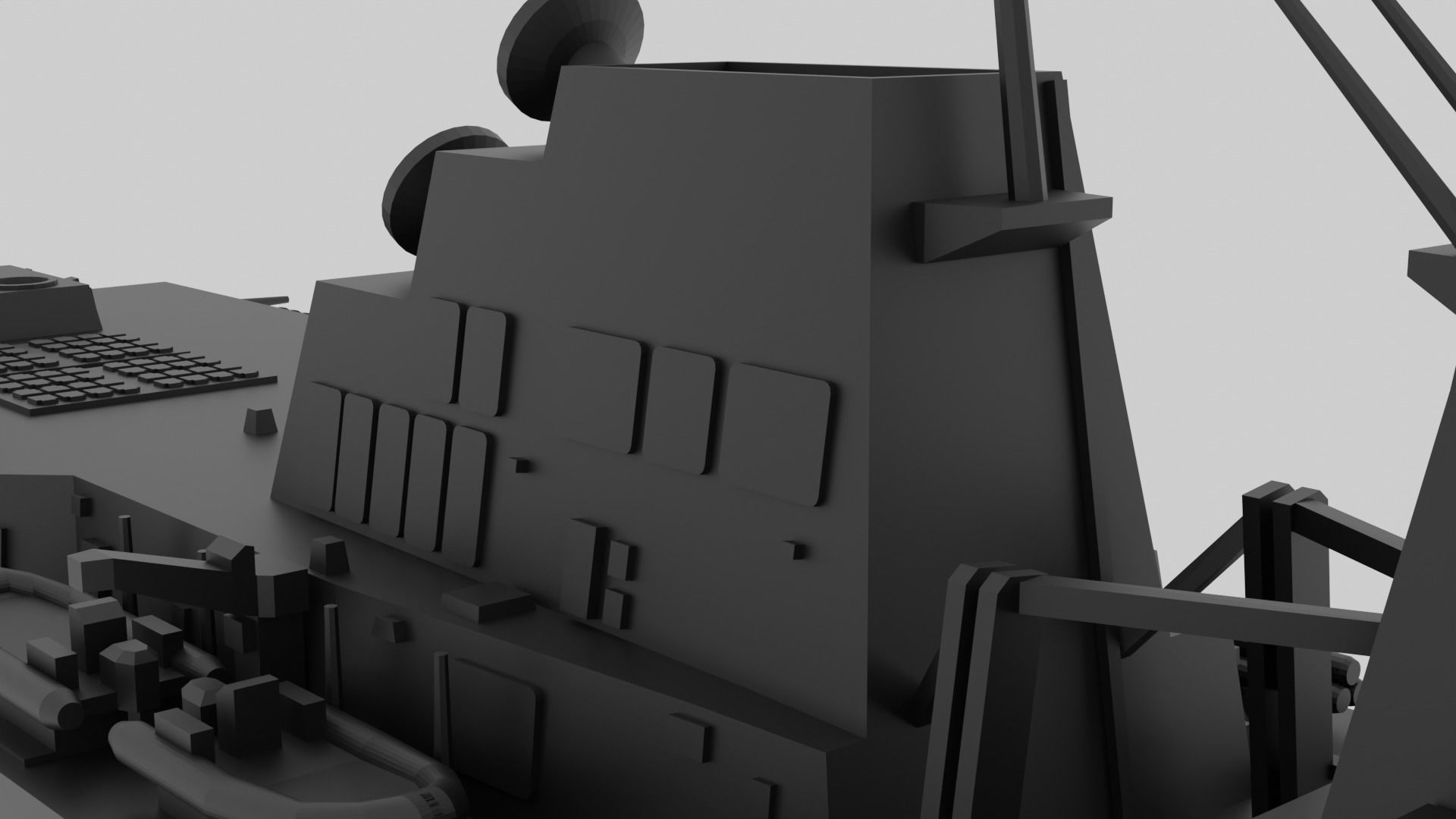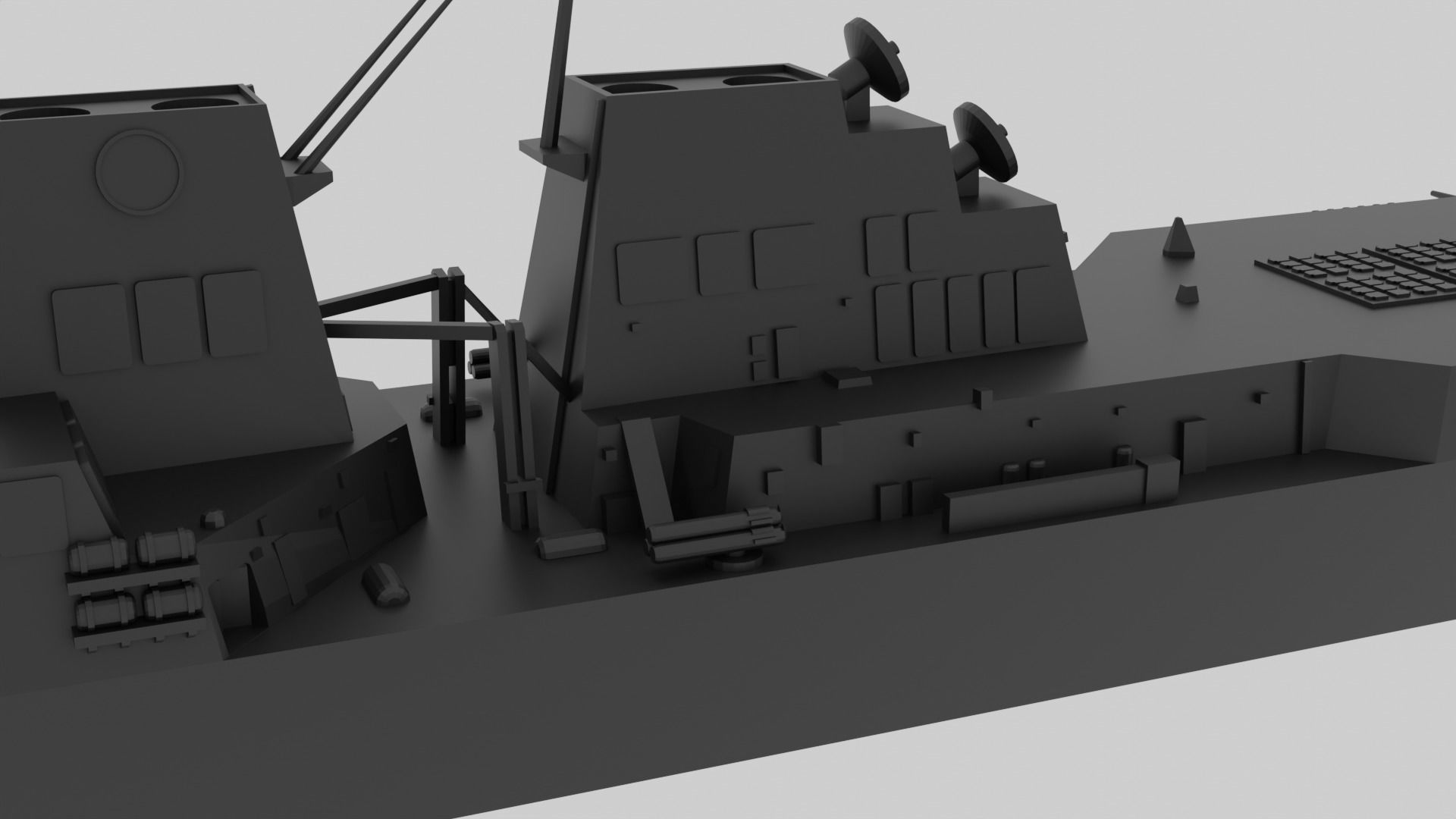
USS Mustin - Model for small scale printing 3D print model
The Arleigh Burke-class is a class of guided missile destroyers currently forming the backbone of the US Navy. Their tasks is to secure carrier Task Forces, survey large areas with their sensors and provide fire support for other nations. To achieve this, the ships employ a large array of sensors and weaponry, making them one of the most versatile class currently afloat. Combined with their high numbers, the class makes the US Navy the biggest and best armed Navy of the world, only seconded by China and Russia in terms of firepower. As of October 2023 72 units have been built, with all of them being in service. Since the Zumwalt-class proved ineffective, 20 more units are planned.
In the early 1980s a replacement for the aging Charles F. Adams and Farragut-class was needed. As missile warfare had become a central point in naval warfare, it was chosen to primarily design a ship around the AEGIS system which had already been proven on the Ticonderoga-class of guided missile cruisers. Where as this class was based on the Spruance-class, the Arleigh Burke-class would be designed from the ground up with stealth and endurance in mind. To cut down production time and cost, the ships are built in modules which are then assembled in the dockyard.
As primary weaponry, the class employs the AEGIS system which commands a Mk41 VLS of different sizes. This VLS can be used for aerial warfare, surface battles and strategic strikes, as well as ASW in some cases. Since the system is wide-spead among many nations, resupply is easy to achieve, especially in foreign waters. On the first few units of the class, two quadruple Harpoon-launchers were installed, though these were removed later on. To complement the missile systems a 5" Mk45 Gun is installed, giving this class a relatively high capability apart from missiles alone. Since ASW has been considered as well, two triple Mk 32 Torpedo launchers, Nixie and Sonar suite are installed. All in all this class is a complete package, ready for all kinds of warfare. Due to stealth individual ships can break off the formations for single missions as well without being spotted right away.
To enhance the fighting capability, several modernizations were done during the construction of the class. The earliest units belong to the so called Flight I, being the original design. In 1992, the Flight II was introduced, which upgraded sonar and radar as well as improved signalling and electronic warfare. Two years later, in 1994, the Flight IIA began to take shape, changing the design drastically. The ships were lenghtened to accomodate two additional helicopter hangars and bigger VLS as well as new propellers and fiber optic control system. The Harpoon-launchers were removed and several changes for stealth were made as well. Several different modifications were done additionally, though some were reverted at a later date.
With the restart of production, Flight III was introduced. Changes on the radar, propulsion and structure were made, as well as increasing the amount of generators present. Eventually the class will be replaced by the DDG(X) program, though it is yet unknown when the first ship of the class will be decommissioned.
USS Mustin was laid down and launched in 2001, entering service two years later. She belongs to the Flight IIA, though several modifications were done during her carreer. This includes the addition of a Phalax CIWS aft off the funnels. Like most modern units this ship has not seen active combat since her maiden deployment in 2005. Though the ship completed several cruises with carriers and other nations, the main tasks so far were surveillance and aiding countries during natural disasters. In 2021 Mustin showed US presence in the South China sea by maneuvering between the Chinese aircraft carrier Liaoning and her escorts. This happening caused several outcries, though it sparked no international incident.
This model includes a Statsheet which displays some data of the ship as well as two renderings of the model. The full scale image is located in the zip-archive.
Note: This model is recommended to be used in the 1/2000 scale. The models itself isnt scaled, the scale table is down below. This model depicts Mustin as built in the early Flight IIA configuration- meaning without the Phalanx on the aft deck.
1/4000: 3,87cm or 1.52in
1/3000: 5,1cm or 2in
1/2000: 7,75cm or 3.05in
1/1000: 15,5cm or 6.1in
For self calculation: The USS Mustin as a Flight IIA is roughly 155m or 509ft long.
The model is intended to be used with little supports as possible, yet some are recommended below the barrel of the main gun and the main mast. Be carefull when removing the support structures, as the mast is quite fragile and high in mass especially the braces are fragile. I recommend using a resin printer for this. Up and Downsclaling might be possible, yet I dont know to what extend.
If you face issues with the model, have questions or want to propose some changes, please reach out to me, I am always happy to help. I am also open for suggetions for new ships which I havent done yet, as I am looking to expand my catalogue of ships.
Changelog: V2: Fixed issues with manifold geometry across the whole model, file names changed accordingly


















